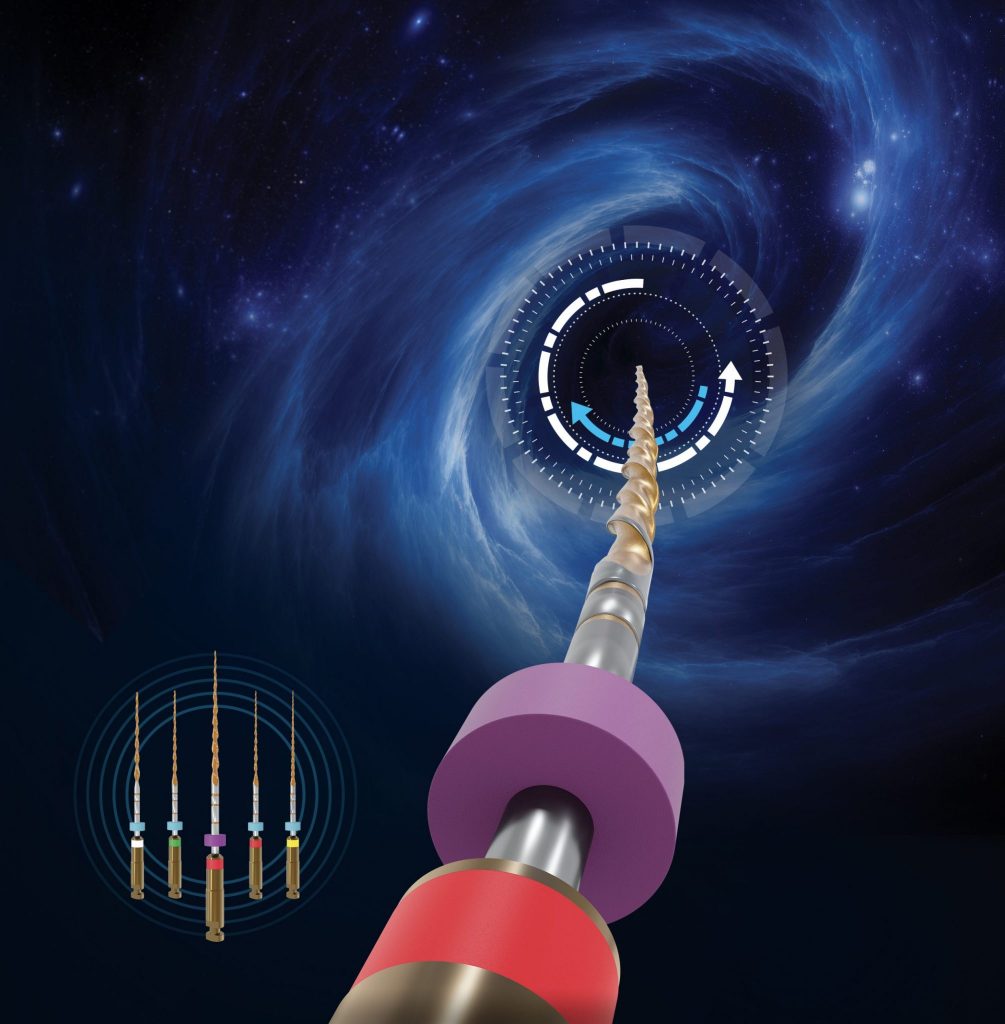Canal preparation: always a challenging step, but modern instruments are up to the job
Featured Products Promotional FeaturesPosted by: Dental Design 24th May 2022

During endodontic treatment, canal preparation is recognised as one of the most important steps, but also one of the most challenging.[i] It enables tissue, microorganisms and other products to be comprehensively cleaned away, and for space to be created that will then be irrigated, medicated and obturated.
As with almost every process in dentistry, developments in technique – and the tools/materials that support them – mean that contemporary approaches to canal preparation are both simplified and give modern clinicians more options, especially in complex cases. They also reflect the trend for conservative treatments, which preserve and protect vital, healthy tissue.
In the past, both the instruments and methods used, such as the step back/incremental technique, could not only prove time-consuming, but presented many disadvantages, such an increased risk of inadequate irrigation, also ledging, transportation and perforation.[ii] The step-down/crown down technique was developed as a response to these and other limitations; this sequence has various advantages including more precision with regards to working length and apical size, also enhanced irrigation penetration and straight access for instruments into the canal anatomy.[iii],[iv]
But the real revolution in root canal preparation has come with new alloys used to manufacture instruments to make endodontic treatment overall safer and more successful, also more cost effective. Unlike stainless steel root canal instruments, nickel-titanium, or NiTi, alloys are metallurgic, meaning they can be heat-treated to enhance the files’ properties.
There is a huge array of NiTi rotary files on the market. Certain manufacturers have been able to modify the properties of NiTi even further, to develop files with controlled memory (CM). Confident preparation of even very curved canals could then be achieved without fear of separation, as the tension-free CM files are able to be bent by hand. Now the 5th generation of root canal files have been made using an electrical discharge machining (EDM) process, for a unique, hardened surface to improve cutting efficiency even further.
Endodontists want to deliver preparations that are quick, as well as effective. Root canals (still) suffer from a case of bad press: they’re painful, they’re invasive and there is no guarantee that the result will last – these are common myths. The instruments now available have a key role to play in helping to convince people why they should go ahead with a recommendation for endodontic therapy. They have allowed this treatment to be highly conservative, efficiently delivered and have an excellent success rate. The patient will have their tooth saved, by spending far less time in the dentist’s chair than they think, and less money too! Because fewer tools are needed, this supports good value. Any pain will be easily managed, and in just a few days they will be feeling great and returned to good health.
 If modern endo instrumentation means using a greatly reduced number of files, other manufacturers are offering just one file for canal shaping, used in a reciprocating motion – repeated clockwise and counter-clockwise movements. The author of a paper published in 2008 gives their preliminary observations of the single-file technique, concluding two major advantages are cost-effectiveness, also the elimination of the possible cross contamination of pathogens associated “with the single use of endodontic instruments”.[v] The reciprocating motion of the file is controlled by a motor, which often can accept rotary systems, so the dentist can use a ‘hybrid’ approach. They can then become adept at using different combinations of instruments and techniques, to successfully treat a wide range of cases.[vi]
If modern endo instrumentation means using a greatly reduced number of files, other manufacturers are offering just one file for canal shaping, used in a reciprocating motion – repeated clockwise and counter-clockwise movements. The author of a paper published in 2008 gives their preliminary observations of the single-file technique, concluding two major advantages are cost-effectiveness, also the elimination of the possible cross contamination of pathogens associated “with the single use of endodontic instruments”.[v] The reciprocating motion of the file is controlled by a motor, which often can accept rotary systems, so the dentist can use a ‘hybrid’ approach. They can then become adept at using different combinations of instruments and techniques, to successfully treat a wide range of cases.[vi]
The choice of reciprocating file includes those that have been heat-treated with a patented process to give it a perfect balance between flexibility and cutting efficiency, as well as controlled memory. For example, created by MicroMega using C.Wire heat treatment, the One RECI file can be pre-bent to respecting even complex anatomy. With a 1mm wire diameter, the peri-cervical part of the canal and surrounding tissue are preserved, enabling the delivery of minimally-invasive, highly conservative endo treatment, that is also safe. MicroMega is part of the COLTENE group, the dental specialist whose mission is to save practices time and money with innovative solutions to upgrade their dentistry. The One RECI can be used with the CanalPro™ Jeni motor – a digital solution with integrated apex locator, also available from COLTENE. The Jeni is matched to four NiTi file systems, with a Doctor’s Choice function for storing individual sequences for conventional movement patterns.
The tools modern dentists use have helped define and develop new techniques; new techniques have meant manufacturers have had to raise their game and create product lines to match. In endodontics, simplified file systems actually mean more choice, and a greater number of options for the delivery of stable and successful treatment. Along with tools that can give predictable outcomes, the move from stainless steel, to NiTi rotary instruments and now reciprocating single files has continued alongside the trend towards the kind of highly conservative treatments that patients favour and dentists want to deliver.
For more on COLTENE, visit www.coltene.com,
email info.uk@coltene.com or call 0800 254 5115.
Author: Mark Allen, General Manager at COLTENE
[i] Waplington, M., McRobert, A. Shaping the root canal system. Br Dent J 216, 293–297 (2014). https://doi.org/10.1038/sj.bdj.2014.203
[ii] Br Dent J 216, 293–297 (2014).
[iii] Tortini D, Colombo M, Gagliani M. Apical crown technique to model canal roots. A review of the literature. Minerva Stomatol. 2007 Sep;56(9):445-59. English, Italian. PMID: 17938624.
[iv] Br Dent J 216, 293–297 (2014).
[v] Yared G . Canal preparation using only one NiTi rotary instrument: preliminary observations. Int Endod J 2008; 41: 339–344.
[vi] Br Dent J 216, 293–297 (2014).








